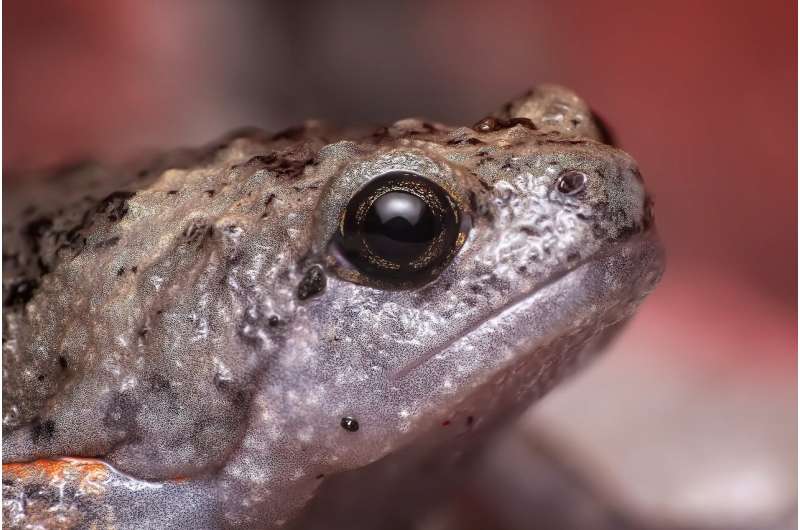Which reptiles and amphibians in the southwestern United States are most vulnerable to climate change?

The desert regions of the arid southwestern United States are home to a wide range of reptile and amphibian species that face continued habitat loss and changing climates.
New research published in The Journal of Wildlife Management finds that even under the most optimistic climate change scenario—with declining emissions from 2020 to near zero emissions by 2100—76% of the region may experience a loss of 20% or more of the reptile and amphibian species examined.
The most vulnerable species were those with limited dispersal capabilities—meaning that they cannot move into new suitable areas that would require them to travel long distances. The results may help indicate which types of species should be prioritized for conservation actions.
“Desert regions often get overlooked for conservation work, but there are many species that may face dramatic habitat loss if we don’t look ahead and plan for the future,” said corresponding author Richard D. Inman, Ph.D., of the U.S. Geological Survey.
More information:
Dispersal limitations increase vulnerability under climate change for reptiles and amphibians in the southwestern United States, The Journal of Wildlife Management (2022). DOI: 10.1002/jwmg.22317
Citation:
Which reptiles and amphibians in the southwestern United States are most vulnerable to climate change? (2022, November 9)
retrieved 9 November 2022
from https://phys.org/news/2022-11-reptiles-amphibians-southwestern-states-vulnerable.html
This document is subject to copyright. Apart from any fair dealing for the purpose of private study or research, no
part may be reproduced without the written permission. The content is provided for information purposes only.
For all the latest Science News Click Here
For the latest news and updates, follow us on Google News.

